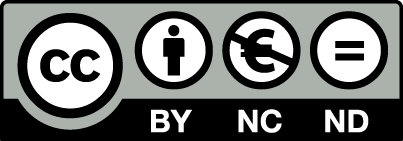Cheilitis: causes, therapy and prevention
https://doi.org/10.21518/ms2024-048
Abstract
Inflammation of the lip skin that can be characterized by peeling, erythema and swelling is known as cheilitis. This condition may be present in a number of skin and systemic diseases. The inflammation process is usually limited to the vermillion border of the lips, but in some cases, it may spread to the skin surrounding the lips and even to the oral mucosa. Cheilitis can be divided into several types due to its causes. Irritant contact cheilitis is the result of frequent hot or dry air exposure. Allergic cheilitis is a delayed reaction following contact with allergens. Atopic cheilitis occurs in individuals suffering from atopic dermatitis. Infection with Candida albicans or Staphylococcus aureus is a common cause of angular cheilitis, which also often occurs as a result of insufficient oral hygiene or improperly selected dentures. Drug-induced cheilitis occurs as a result of intake of certain medications, mainly systemic retinoids. Therapy for cheilitis depends on the factor that triggered the inflammation and is aimed at eliminating unpleasant symptoms. Due to variety of triggers for cheilitis, treatment of this disease may need to consider the involvement of different specialists: dermatologists, dentists, and in some cases, oncologists. Common elements of the treatment of cheilitis, regardless of its etiological factor, is the prescription of special-purpose care products that will have moisturizing and softening effects on the lip skin. This article describes several clinical cases demonstrating the effectiveness of lip care products, which composition provides anti-inflammatory, moisturizing and regenerating effects.
About the Authors
L. R. SakaniyaRussian Federation
Luiza R. Sakaniya - Junior Researcher, Dermatovenerologist, Center for Theoretical Problems of Physical and Chemical Pharmacology of Russian Academy of Sciences; Dermatovenerologist, Cosmetologist, Trichologist, Moscow Scientific and Practical Center of Dermatovenereology and Cosmetology.
30, Srednyaya Kalitnikovskaya St., Moscow, 109029; 20, Seleznevskaya St, Moscow, 127473
A. V. Pavlova
Russian Federation
Anna V. Pavlova - Dentist, Sklifosovsky Research Institute for Emergency Medicine.
3, B. Sukharevskaya Square, Moscow, 129090
I. M. Korsunskaya
Russian Federation
Irina M. Korsunskaya - Dr. Sci. (Med.), Professor, Head of Laboratory, Center for Theoretical Problems of Physical and Chemical Pharmacology of Russian Academy of Sciences.
30, Srednyaya Kalitnikovskaya St., Moscow, 109029
References
1. Malamos D, Scully C. Sore or Swollen Lips Part 1-Causes and Diagnosis. Dent Update. 2016;43(9):874–882. https://doi.org/10.12968/denu.2016.43.9.874.
2. Hitz Lindenmüller I, Itin PH, Fistarol SK. Dermatology of the lips: inflammatory diseases. Quintessence Int. 2014;45(10):875–883. https://doi.org/10.3290/j.qi.a32638.
3. Litaiem N, Ben Slimane M, Bacha T, Rammeh S, Zeglaoui F. Cheilitis with hemorrhagic crusts of the vermilion lips. Int J Dermatol. 2020;59(7):e234–e236. https://doi.org/10.1111/ijd.14814.
4. Lugović-Mihić L, Pilipović K, Crnarić I, Šitum M, Duvančić T. Differential Diagnosis of Cheilitis – How to Classify Cheilitis? Acta Clin Croat. 2018;57(2):342–351. https://doi.org/10.20471/acc.2018.57.02.16.
5. Griggs J, Almohanna H, Ahmed A, Ren S, Tosti A. “Fresh Breath” on Toothpaste: Peppermint as Cause of Cheilitis. Dermatitis. 2019;30(1):74–75. https://doi.org/10.1097/DER.0000000000000433.
6. Nyman GSA, Tang M, Inerot A, Osmancevic A, Malmberg P, Hagvall L. Contact allergy to beeswax and propolis among patients with cheilitis or facial dermatitis. Contact Dermatitis. 2019;81(2):110–116. https://doi.org/10.1111/cod.13306.
7. Farmer WS, Marathe KS. Atopic Dermatitis: Managing the Itch. Adv Exp Med Biol. 2017;1027:161–177. https://doi.org/10.1007/978-3-319-64804-0_13.
8. Garbacz K, Kwapisz E, Wierzbowska M. Denture stomatitis associated with small-colony variants of Staphylococcus aureus: a case report. BMC Oral Health. 2019;19(1):219. https://doi.org/10.1186/s12903-019-0910-6.
9. Freitas J, Bliven P, Case R. Combined zinc and vitamin B6 deficiency in a patient with diffuse red rash and angular cheilitis 6 years after Roux-en-Y gastric bypass. BMJ Case Rep. 2019;12(8):e230605. https://doi.org/10.1136/bcr-2019-230605.
10. Collet E, Jeudy G, Dalac S. Cheilitis, perioral dermatitis and contact allergy. Eur J Dermatol. 2013;23(3):303–307. https://doi.org/10.1684/ejd.2013.1932.
11. Cabras M, Gambino A, Broccoletti R, Lodi G, Arduino PG. Treatment of angular cheilitis: A narrative review and authors’ clinical experience. Oral Dis. 2020;26(6):1107–1115. https://doi.org/10.1111/odi.13183.
12. Martori E, Ayuso-Montero R, Martinez-Gomis J, Viñas M, Peraire M. Risk factors for denture-related oral mucosal lesions in a geriatric population. J Prosthet Dent. 2014;111(4):273–279. https://doi.org/10.1016/j.prosdent.2013.07.015.
13. Freedman J, Griggs J, De Padova MP, Tosti A. What’s the “buzz” about propolis? Propolis-induced systemic contact dermatitis. Contact Dermatitis. 2019;80(1):65–67. https://doi.org/10.1111/cod.13131.
14. Yu JJ, Zhang CS, Coyle ME, Du Y, Zhang AL, Guo X et al. Compound glycyrrhizin plus conventional therapy for psoriasis vulgaris: a systematic review and meta-analysis of randomized controlled trials. Curr Med Res Opin. 2017;33(2):279–287. https://doi.org/10.1080/03007995.2016.1254605.
15. El-Saber Batiha G, Magdy Beshbishy A, El-Mleeh A, Abdel-Daim MM, Prasad Devkota H. Traditional Uses, Bioactive Chemical Constituents, and Pharmacological and Toxicological Activities of Glycyrrhiza glabra L. (Fabaceae). Biomolecules. 2020;10(3):352. https://doi.org/10.3390/biom10030352.
16. Han GH, Kim SK, Yoon PK, Kang Y, Kim BS, Fu Y et al. Fermentative production and direct extraction of (-)-α-bisabolol in metabolically engineered Escherichia coli. Microb Cell Fact. 2016;15(1):185. https://doi.org/10.1186/s12934-016-0588-2.
17. Poljšak N, Kočevar Glavač N. Vegetable Butters and Oils as Therapeutically and Cosmetically Active Ingredients for Dermal Use: A Review of Clinical Studies. Front Pharmacol. 2022;13:868461. https://doi.org/10.3389/fphar.2022.868461.
18. Mohd Zaffarin AS, Ng SF, Ng MH, Hassan H, Alias E. Pharmacology and Pharmacokinetics of Vitamin E: Nanoformulations to Enhance Bioavailability. Int J Nanomedicine. 2020;15:9961–9974. https://doi.org/10.2147/IJN.S276355.
19. Ebner F, Heller A, Rippke F, Tausch I. Topical use of dexpanthenol in skin disorders. Am J Clin Dermatol. 2002;3(6):427–433. https://doi.org/10.2165/00128071-200203060-00005.
20. Mostafa ES, Maher A, Mostafa DA, Gad SS, Nawwar MAM, Swilam N. A Unique Acylated Flavonol Glycoside from Prunus persica (L.) var. Florida Prince: A New Solid Lipid Nanoparticle Cosmeceutical Formulation for Skincare. Antioxidants (Basel). 2021;10(3):436. https://doi.org/10.3390/antiox10030436.
21. Sánchez M, González-Burgos E, Iglesias I, Gómez-Serranillos MP. Pharmacological Update Properties of Aloe Vera and its Major Active Constituents. Molecules. 2020;25(6):1324. https://doi.org/10.3390/molecules25061324.
22. Rozza AL, Beserra FP, Vieira AJ, Oliveira de Souza E, Hussni CA, Martinez ERM et al. The Use of Menthol in Skin Wound Healing-Anti-Inflammatory Potential, Antioxidant Defense System Stimulation and Increased Epithelialization. Pharmaceutics. 2021;13(11):1902. https://doi.org/10.3390/pharmaceutics13111902.
Review
For citations:
Sakaniya LR, Pavlova AV, Korsunskaya IM. Cheilitis: causes, therapy and prevention. Meditsinskiy sovet = Medical Council. 2024;(2):122-126. (In Russ.) https://doi.org/10.21518/ms2024-048









































